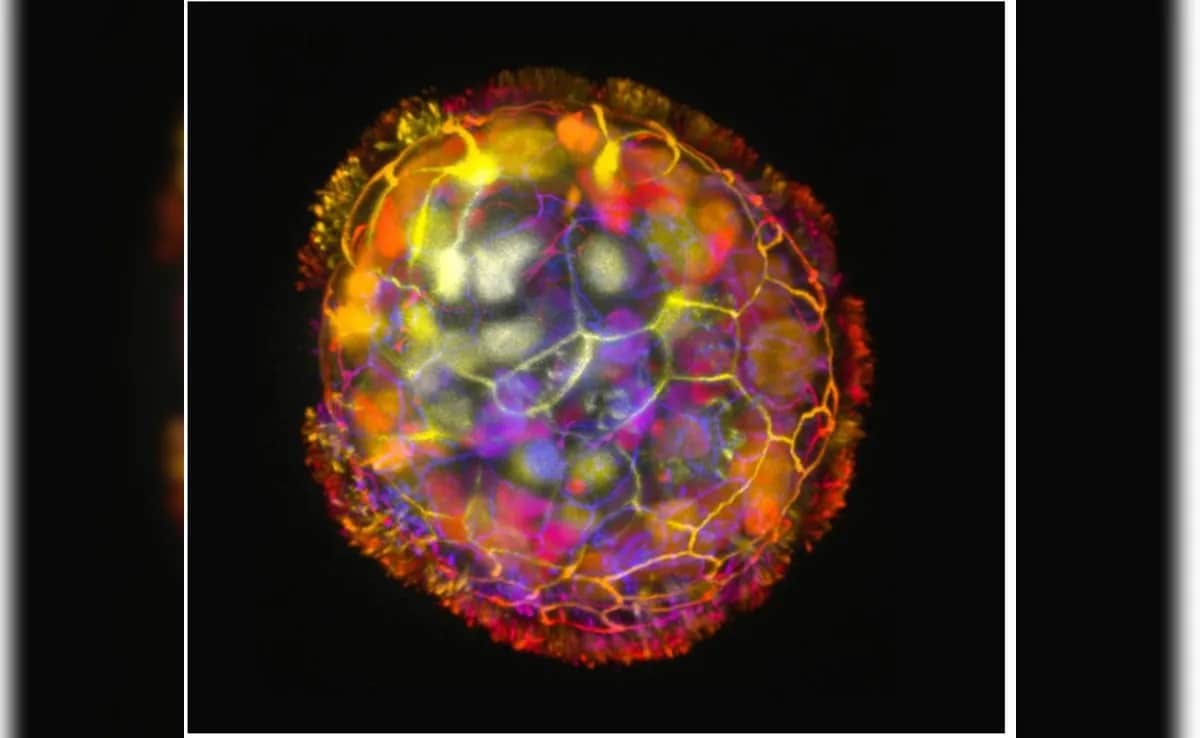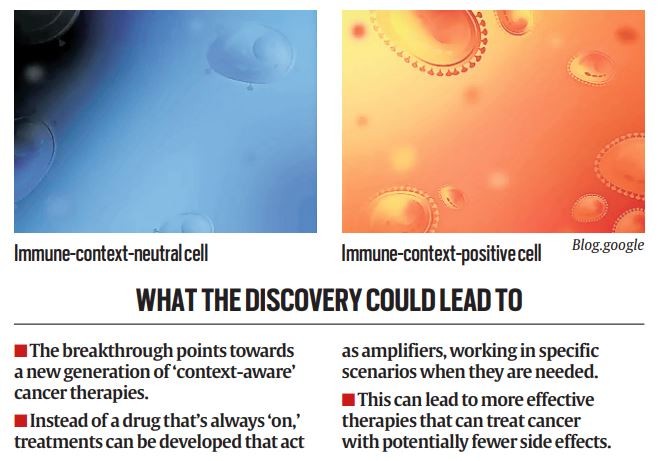Description

Disclaimer: Copyright infringement not intended.
Context
Anthrobots, constructed from human tracheal cells and exhibiting the unprecedented ability to self-assemble and aid in neuronal healing, mark a significant milestone in the realm of bioengineered robots.
Details
Development and Composition
- Human Cell Integration: Anthrobots, novel bioengineered robots, are created from human tracheal cells, enabling unique properties and applications.
- Self-Assembly Capabilities: These biobots possess the remarkable ability to autonomously configure into diverse forms and sizes.
Breakthrough and Medical Implications
- Laboratory Achievement: Researchers at Tufts University and Harvard's Wyss Institute achieved a breakthrough by crafting anthrobots capable of movement and neuronal healing within controlled laboratory conditions.
- Potential Medical Applications: Envisaged for regenerative purposes, disease management, and aiding in recovery due to their remarkable healing properties.
Advancements Over Xenobots
- Differentiation from Xenobots: Contrasting previous xenobots crafted from frog cells, anthrobots stand out as human cell-derived entities with self-assembling capabilities.
- Enhanced Therapeutic Potential: Unlike xenobots, these anthrobots made from human cells demonstrate improved potential for medical applications and therapeutic advancements.

About trachea
- The trachea, commonly known as the windpipe, is a vital part of the respiratory system, facilitating the passage of air to and from the lungs.
Anatomy of the Trachea:
- Tubular Structure: The trachea is a tubular organ composed of cartilaginous rings connected by smooth muscles and fibrous tissue.
- Position in the Body: Situated in the neck, anterior to the esophagus, it extends from the larynx to the bronchi, branching off into the left and right primary bronchi.
Composition and Layers:
- Cartilaginous Rings: C-shaped rings of hyaline cartilage provide structural support, preventing the trachea from collapsing and maintaining an open airway.
- Mucous Membrane: The inner lining consists of mucous-secreting cells and ciliated epithelial cells, which help trap foreign particles and facilitate their removal through upward ciliary movement.
- Connective Tissue: Connective tissues and smooth muscle fibers surround the cartilaginous rings, allowing flexibility and facilitating changes in diameter during breathing.
Functions of the Trachea:
- Conduit for Air: Primary function involves the transportation of air to and from the lungs during the breathing process.
- Air Conditioning: The trachea humidifies, warms, and filters the inhaled air, preparing it for optimal gas exchange in the lungs.
- Mucociliary Clearance: Ciliated cells and mucus help trap and expel dust, debris, and pathogens, preventing them from reaching the lungs.
- Cough Reflex: The trachea's sensory nerves trigger coughing as a protective mechanism to expel irritants or accumulated mucus.
- Role in Phonation: Adjacent to the larynx, the trachea contributes to speech production by modifying the airflow during vocalization.
Clinical Significance:
- Tracheal Stenosis: Narrowing of the tracheal lumen due to scarring or inflammation, leading to breathing difficulties.
- Tracheomalacia: Weakening of the cartilaginous rings, causing the trachea to collapse during breathing.
- Tracheitis: Inflammation of the tracheal lining, often caused by infections.
- Tracheostomy: Surgical procedure involving the creation of an artificial opening in the trachea to assist breathing, especially in cases of upper airway obstruction.
- Tracheal Reconstruction: Surgical techniques to repair or reconstruct damaged portions of the trachea.
Human Tracheal Cells
- Human tracheal cells are specialized cells found in the trachea, also known as the windpipe, forming an integral part of the respiratory system.
Characteristics:
- Respiratory System Component: Situated in the trachea, these cells contribute to the functioning of the respiratory system.
- Ciliary Action: Tracheal cells are equipped with cilia, small hair-like structures that aid in sweeping mucus, dust, and pathogens away from the lungs, promoting respiratory health.
Cell Structure and Types:
- Epithelial Cells: Predominantly consisting of epithelial cells, forming the lining of the trachea and providing a protective barrier.
- Goblet Cells: Present among tracheal cells, responsible for producing mucus to trap foreign particles and keep the respiratory tract moist.
Importance in Research and Medicine:
- Biological Studies: Tracheal cells serve as a common model in cellular and molecular biology research, facilitating studies on cell behavior, differentiation, and response to stimuli.
- Regenerative Medicine: Due to their ability to regenerate and differentiate, tracheal cells hold significance in tissue engineering and regenerative medicine for potential therapeutic applications.
About Xenobots
Origin and Development:
- Living Machines: Xenobots are derived from biological materials, specifically frog cells, which are reconfigured to create functional organisms.
- Collaborative Research: Developed through a collaboration between computer scientists and biologists, leveraging artificial intelligence and cellular biology.
Creation Process:
- Cellular Assembly: Xenobots are built from living cells taken from Xenopus laevis (African clawed frogs).
- Algorithm-Driven Design: Researchers use computational algorithms to design and organize these cells into specific configurations to perform desired tasks.
Characteristics and Capabilities:
- Cellular Diversity: Composed of skin and heart cells, offering both structural support and movement capabilities.
- Self-Healing Ability: Xenobots have regenerative capabilities, enabling self-repair and adaptation to damage.
- Collective Behavior: Xenobots exhibit collective behavior, wherein individual units work together to accomplish tasks.
- Applications: Potential uses in medicine, environmental cleanup, drug delivery, and microscopic surgery due to their biocompatibility.
About Biorobots
- Also known as biohybrid systems or biologically inspired robots, are machines designed and constructed to mimic or integrate biological systems and living organisms in their structure, function, or behavior.
- These innovative robots leverage biological principles, materials, or components to enhance their performance, adaptability, and interaction with their environment.
Biohybrid Systems:
- Integration of Biological Elements: Biorobots combine living tissues, cells, or biological components with artificial systems or robotics.
- Inspired by Biological Systems: Drawing inspiration from nature's mechanisms and structures, biorobots emulate biological functions or behaviors.
Types of Biorobots:
- Biohybrid Machines: Robots that incorporate biological components, such as muscle tissues or neurons, to enhance functionality or adaptability.
- Biomechanical Systems: Robots imitating the physical structure and movement of living organisms, like animals or humans.
- Bioinspired Algorithms: Utilization of biological principles, such as neural networks or genetic algorithms, in robotics and artificial intelligence.
Applications and Uses:
Medical Field:
- Biomedical Devices: Biorobots aid in surgeries, prosthetics, and drug delivery systems.
- Biological Monitoring: Use of biohybrid sensors to monitor health parameters or detect biological substances.
Environmental Exploration:
- Biological Mimicry: Robots designed to mimic animals or organisms for exploration in challenging terrains or underwater environments.
- Biological Sensing: Biorobots employed for environmental monitoring or detection of pollutants.
Industrial and Manufacturing:
- Adaptive Robotics: Bioinspired designs for robots capable of self-repair, self-assembly, or adapting to changing environments.
- Soft Robotics: Integration of soft and flexible materials mimicking biological tissues for enhanced dexterity and safety in manufacturing processes.
Challenges and Ethical Considerations:
- Biocompatibility and Safety: Ensuring compatibility and safety when integrating biological components with robotics.
- Ethical Implications: Ethical concerns regarding the use of living organisms in robotics, including animal welfare and ethical boundaries in experimentation.

Conclusion
Their potential applications span across regenerative medicine, wound healing, and disease management, heralding a promising future in healthcare innovations. The capability to harness cell collectives opens avenues not only in medical advancements but also in diverse fields like sustainable construction and exploration beyond Earth's boundaries, signifying a groundbreaking achievement in bioengineering.
|
PRACTICE QUESTION
Q. How do these bioengineered entities, constructed from human tracheal cells, represent a paradigm shift in the domain of biorobotics and their applications in healthcare and beyond? (250 Words)
|








